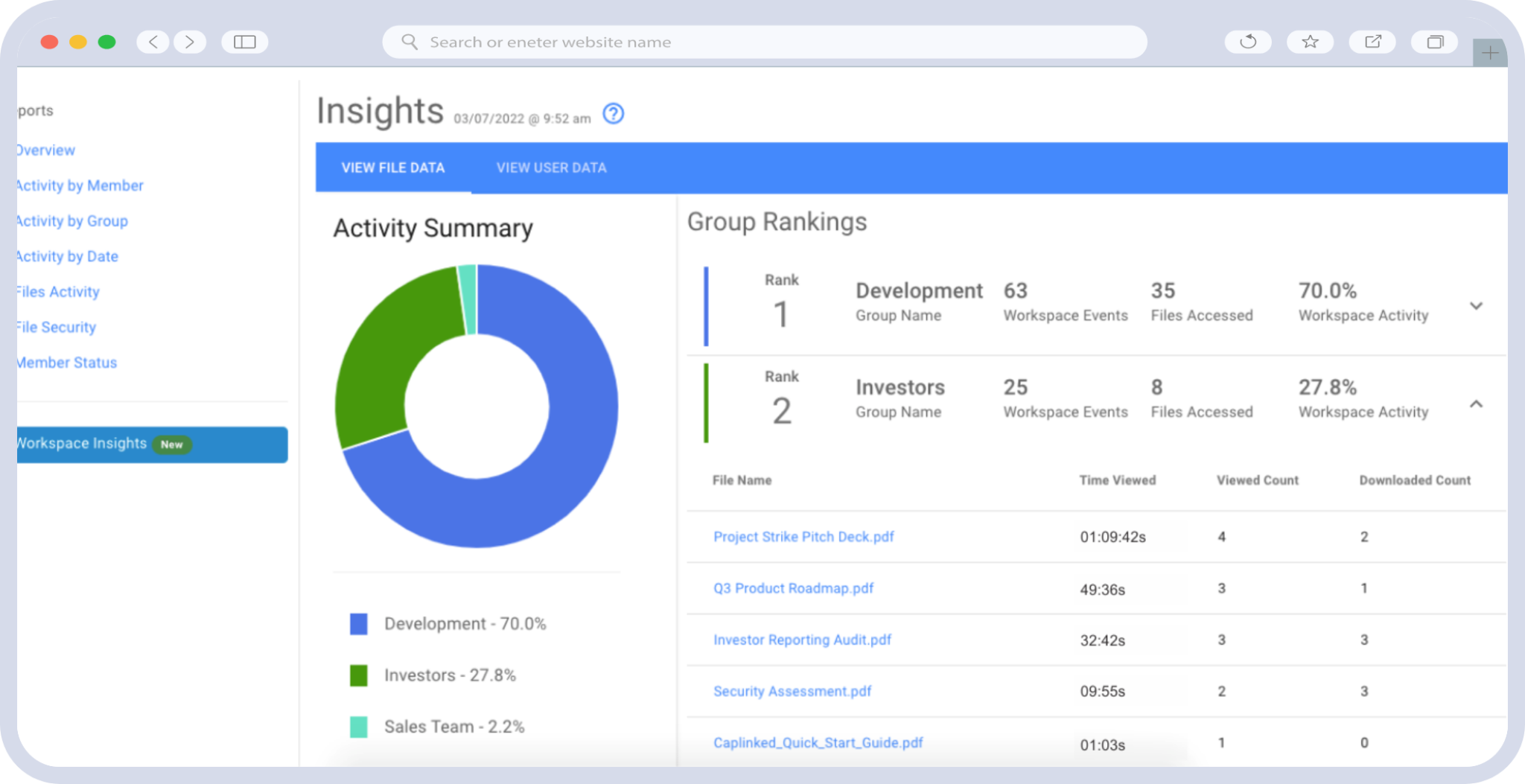Over the last decade, the U.S. government’s cloud adoption journey has shifted from cautious experimentation to full-scale modernization. Agencies that once hesitated to move sensitive workloads off-premises now rely on cloud platforms as the backbone of mission-critical operations. But this shift has also made compliance more urgent than ever. Federal rules, defense mandates, and security frameworks set strict guardrails on where data can live, who can access it, and how it must be protected.
At the center of this compliance landscape stands FedRAMP High. It is the highest baseline for unclassified systems under the Federal Risk and Authorization Management Program (FedRAMP). For workloads that handle sensitive but unclassified information — everything from controlled defense data to criminal justice files — FedRAMP High is the threshold agencies must meet.
And no cloud platform has done more to operationalize FedRAMP High than AWS GovCloud (US). Designed from the ground up as a secure enclave for government workloads, GovCloud provides the compliance foundation on which a growing ecosystem of software solutions — including Virtual Data Rooms (VDRs) — can be built.
For agencies, contractors, and enterprises operating in regulated markets, the combination of FedRAMP High and AWS GovCloud represents the gold standard for securing sensitive collaboration. Virtual Data Rooms built on GovCloud are not just storage spaces; they are compliance-ready platforms that enable agencies to share, review, and protect critical information with full confidence.
Table of Contents
ToggleWhat FedRAMP High Actually Means
To understand why AWS GovCloud is the preferred host for government-grade Virtual Data Rooms, it’s worth unpacking what “FedRAMP High” actually entails.
FedRAMP — the Federal Risk and Authorization Management Program — standardizes the security assessment and authorization process for cloud services used by federal agencies. It categorizes systems into three impact levels:
- FedRAMP Low: For systems with limited data, where a breach would cause minimal harm.
- FedRAMP Moderate: Covers the vast majority of federal workloads, including personally identifiable information (PII).
- FedRAMP High: Reserved for systems handling the government’s most sensitive unclassified data, including Controlled Unclassified Information (CUI).
The “High” baseline corresponds to 421 security controls across 17 control families drawn from the NIST 800-53 standard. These controls span areas such as access control, audit and accountability, incident response, configuration management, and data integrity. A FedRAMP High system must demonstrate not only technical safeguards like encryption, but also procedural and personnel safeguards — ensuring that data is protected from insider threats and external adversaries alike.
For SaaS providers, achieving FedRAMP High on their own is a massive undertaking. But AWS GovCloud gives them a critical head start. By operating in GovCloud, providers can inherit many of the infrastructure-level controls — physical security, network isolation, cryptographic modules — that AWS has already validated. This inheritance reduces the compliance burden and accelerates the authorization process.
For agencies procuring a VDR solution, the assurance is clear: if it runs on GovCloud and is FedRAMP High authorized, the platform has already cleared the highest bar for unclassified government data.
AWS GovCloud: Built for FedRAMP High from Day One
AWS GovCloud (US) was launched in 2011, years before most competitors had even considered building government-specific regions. Its mission was explicit: provide a secure, isolated environment for workloads subject to strict compliance regimes such as ITAR (International Traffic in Arms Regulations) and FedRAMP High.
Several architectural choices set GovCloud apart:
- Isolated Regions: GovCloud operates in physically and logically separate regions (US-East and US-West). These regions are accessible only through accounts vetted for U.S. government and regulated customers.
- U.S.-Only Personnel: All AWS staff who manage GovCloud infrastructure are U.S. citizens who undergo extensive background checks. This satisfies ITAR and other “U.S.-persons only” requirements.
- Provisional ATO at FedRAMP High: GovCloud maintains a Joint Authorization Board (JAB) Provisional Authority to Operate (P-ATO) at the High baseline. This means the platform itself has been assessed against the full FedRAMP High control set.
- Breadth of Services: Unlike some government cloud offerings that lag behind in service parity, GovCloud makes dozens of core AWS services available with FedRAMP High coverage — from compute and storage to databases, networking, and security tooling.
These design principles positioned GovCloud as the default choice for government SaaS providers. For vendors building Virtual Data Rooms and other secure collaboration tools, hosting in GovCloud ensures that the foundation is already compliant, leaving them to focus on application-level features and user experience.
Why Agencies Require GovCloud for High-Compliance VDRs
Virtual Data Rooms are not new — they’ve long been used in mergers, acquisitions, and financial due diligence. But in the government space, the stakes are higher. The data stored in a VDR might include defense procurement documents, law enforcement evidence, or interagency audit reports. In many cases, this data is classified as CUI (Controlled Unclassified Information) or falls under other protected categories.
For these scenarios, agencies insist on GovCloud for several reasons:
- CUI and Federal Contract Information (FCI): Under DFARS and other rules, defense contractors handling CUI must meet strict security requirements. Hosting a VDR in GovCloud simplifies compliance with these mandates.
- DoD Impact Levels 4 and 5: The Department of Defense Cloud Computing SRG maps FedRAMP High to Impact Level 4 and 5, which cover mission-sensitive unclassified data. GovCloud is one of the few environments authorized at this level.
- Law Enforcement and CJIS: State and local agencies using VDRs for criminal justice data require CJIS compliance. GovCloud’s CJIS agreements with states enable compliant hosting.
- Healthcare and IRS Data: GovCloud is HIPAA-eligible and IRS 1075 compliant, making it suitable for VDRs that manage tax records or health information during audits or investigations.
In short, GovCloud is not just a convenience — it is often a requirement. Agencies cannot legally store certain data types in commercial regions or non-compliant clouds. For contractors and vendors, failing to use GovCloud could mean being excluded from government contracts entirely.
The VDR as a Compliance Platform
Hosting in AWS GovCloud transforms the Virtual Data Room from a simple document repository into a compliance platform. Several GovCloud-native features make this possible:
- Encryption Everywhere: All data at rest can be encrypted with FIPS 140-2 validated algorithms, using customer-managed keys in AWS KMS or dedicated CloudHSM appliances. Data in transit is encrypted with TLS 1.2+.
- Granular Access Control: Identity and Access Management (IAM) policies allow fine-grained permissions at the file, folder, or action level. Combined with multifactor authentication, agencies can strictly control who sees what.
- Audit Trails: AWS CloudTrail provides an immutable log of every API call and user action, which can be exported for compliance audits. VDR vendors can integrate these logs into user-facing dashboards to prove accountability.
- Incident Response: GovCloud integrates with GuardDuty, Security Hub, and CloudWatch to detect anomalies. Agencies can respond quickly to suspicious downloads or unauthorized access attempts.
- Segregation of Data: GovCloud’s isolated regions and account structures allow VDR vendors to create per-agency silos, ensuring that one agency’s data never overlaps with another’s.
These capabilities give agencies the assurance that their sensitive documents are not only stored securely but also managed in a way that meets compliance frameworks end to end.
Market Outlook for FedRAMP High VDRs on GovCloud
While Virtual Data Rooms are a familiar tool in the private sector, their role in government is still a relatively young market segment. The broader global VDR market was valued at around $2.5–3 billion in 2024 and is projected to reach $5–8 billion by 2030.
Within this, the U.S. public sector slice is modest but significant — on the order of $100–150 million in annual recurring revenue in 2025. This segment is projected to grow at 15–20% CAGR through 2030, outpacing general government IT spending.
Several factors are fueling this growth:
- Cloud Mandates: Federal policies such as Cloud Smart encourage agencies to replace legacy file-sharing with cloud-based collaboration tools.
- Security Requirements: Rising cyber threats and compliance frameworks (FedRAMP, CMMC 2.0, DFARS) push agencies toward dedicated, compliant solutions.
- M&A and Contractor Ecosystem: Defense and infrastructure modernization programs often involve complex supply chains and acquisitions, where VDRs are needed for secure collaboration.
- Interagency Collaboration: From disaster response to joint investigations, agencies increasingly need to share sensitive information across organizational boundaries — securely and quickly.
For vendors, the message is clear: the intersection of FedRAMP High and GovCloud defines the addressable market for government-grade VDRs.
Why GovCloud Is the Gold Standard for VDRs
AWS is not the only provider offering a government cloud. Microsoft Azure Government and Google Cloud Assured Workloads also carry FedRAMP authorizations and cater to public sector clients. But in the specific context of Virtual Data Rooms, AWS GovCloud continues to lead.
- Maturity and Market Share: GovCloud has been operational since 2011 and holds the largest share of federal cloud workloads. Its long track record reassures agencies and primes the vendor ecosystem.
- Breadth of Services: GovCloud offers a broader service catalog under FedRAMP High than many competitors. This gives VDR vendors more tools for customization, analytics, and automation.
- Depth of Compliance: Beyond FedRAMP, GovCloud meets ITAR, DoD IL5, CJIS, IRS 1075, and HIPAA requirements. Few platforms offer this range of certifications in one enclave.
- Trusted by Defense and Intelligence: GovCloud, combined with AWS’s Secret and Top Secret regions, creates a continuum across classification levels. This positions AWS as the natural choice for defense contractors and intelligence agencies.
While Azure Government is a strong alternative, particularly for agencies embedded in the Microsoft ecosystem, GovCloud’s scale and service depth make it the gold standard for compliance-heavy workloads like Virtual Data Rooms.
The Secure Backbone for Tomorrow’s Virtual Deal Rooms
In 2025, the combination of FedRAMP High and AWS GovCloud defines the benchmark for secure document collaboration in government. Agencies and contractors cannot compromise on compliance, and VDR vendors cannot afford to host outside of GovCloud if they want to serve this market.
By inheriting FedRAMP High controls from AWS and layering on their own application-level features, VDR providers can deliver platforms that are both user-friendly and fully compliant. For agencies, this means sensitive information — from defense procurement data to criminal justice evidence — can be shared and protected in a cloud-native way.
As cloud adoption accelerates, and as regulations grow more stringent, GovCloud’s role as the secure backbone for Virtual Data Rooms will only deepen. It is not just a hosting option; it is the gold standard for anyone building or using a VDR in the public sector.




